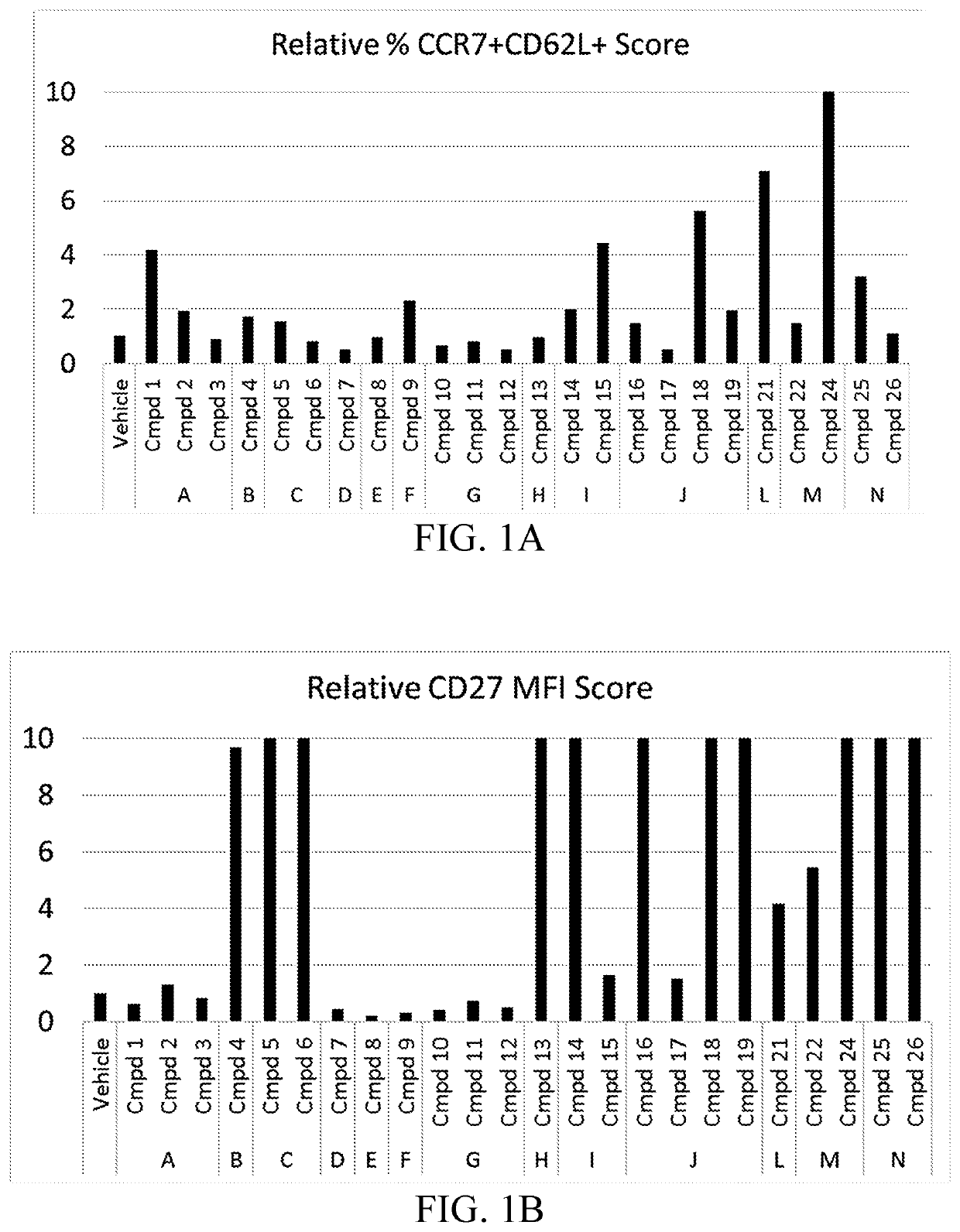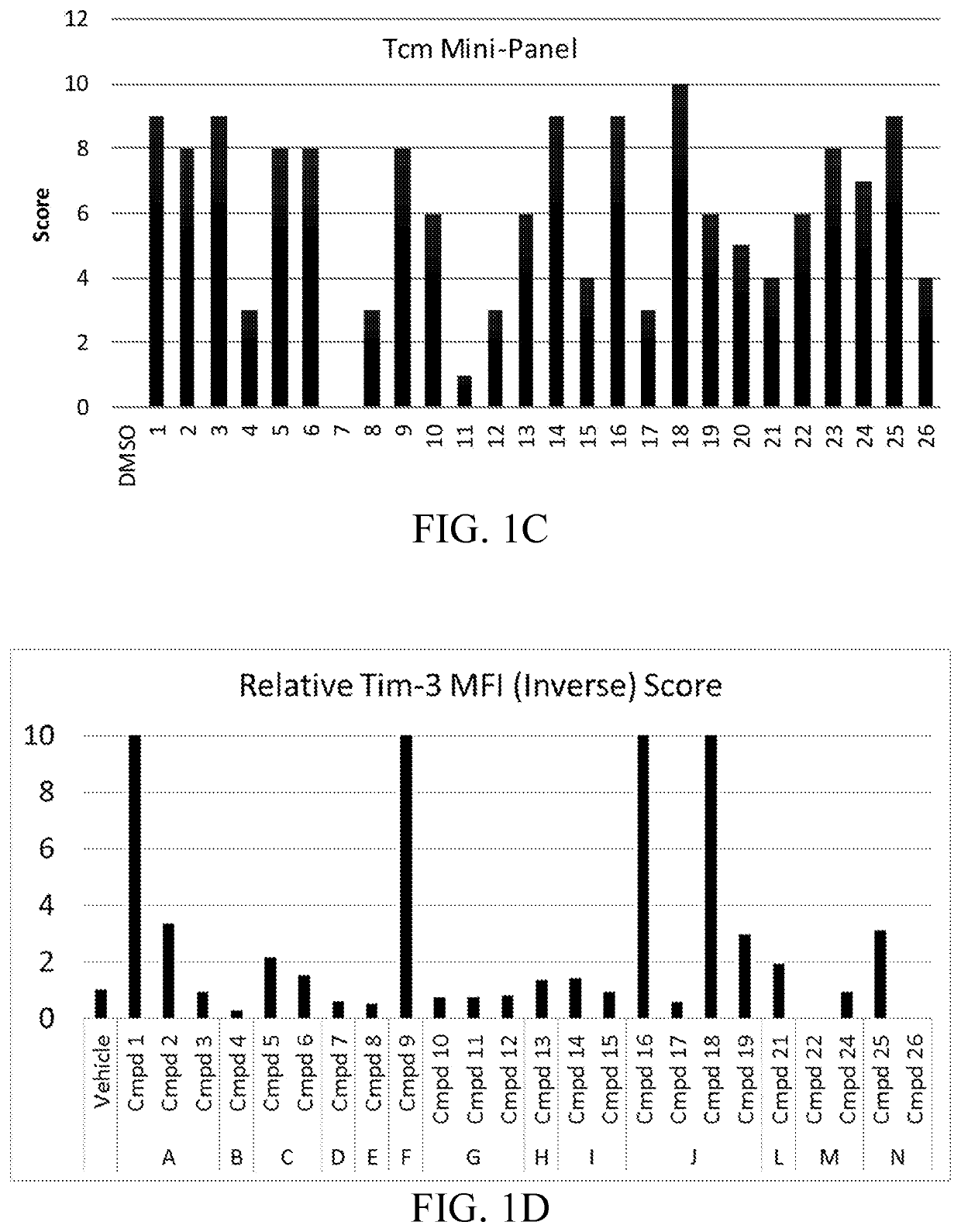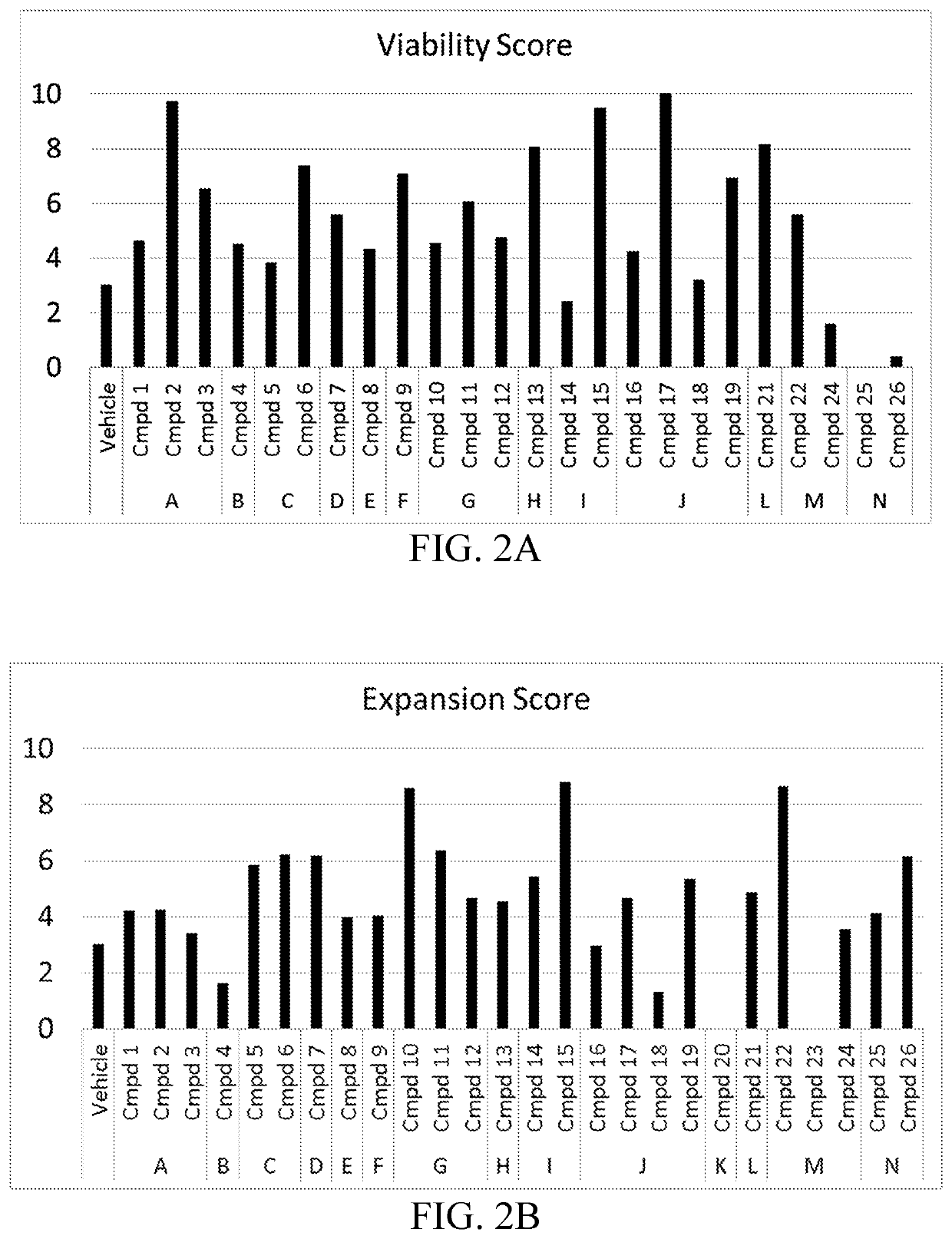Compositions and methods for immune cell modulation in adoptive immunotherapies
a technology of immune cell and immunotherapy, applied in the field of adoptive immune cell therapies, can solve the problems of limiting the ability to obtain cells having desired quantity and quality for certain therapeutic uses, and achieve the effect of improving cell therapy
- Summary
- Abstract
- Description
- Claims
- Application Information
AI Technical Summary
Benefits of technology
Problems solved by technology
Method used
Image
Examples
example 1
Compounds for Immune Cell Modulation
[0222]To assess the ability of the compound groups in Table 1 to impact T cells in immunotherapy, a number of in vitro systems and in vivo models were used and data were analyzed. The impact of individual compounds on naïve, stem cell memory, or central memory T cells were assessed in cells from additional donors. It was shown that each of the compounds in Table 1 positively affect treated T cells in at least one of the following aspects: (1) producing a higher proportion or greater absolute number of phenotypically identified naïve, stem cell memory, or central memory T cells; (2) improving target cell killing ability; (3) increasing cell survival and expansion; (4) increasing cytokine production; and (5) possessing in vivo efficacy, including increased ability in tumor clearance, improved cell persistence in vivo post-transfer, increased ability to reduce tumor burden, or increased ability to promote animal survival following challenge with high...
example 2
c Profiling of T Cells Under Treatment with Selected Compound Groups
[0236]T cell subsets include Tcm, naïve (Tn), effector memory (Tem) and CD45RA+ effector memory (Temra) cells. Tn and Tcm cells are the least differentiated and have the greatest proliferative potential while Temra cells are the most fully differentiated, have poor proliferative potential but strong effector function (D'Asaro et al. 2006). Studies in both non-human primate and NOD / Scid IL-2RγCnull (NSG) mouse models have demonstrated that T cells with a central memory (Tcm) phenotype have improved persistence after adoptive transfer (Berger et al. 2008; Wang et al. 2011). In addition, CAR-expressing CD4 and CD8 central memory T cell (Tcm) subsets were administered to Non-Hodgkin lymphoma patients after hematopoietic stem cell transplantation, and the Tcm-derived CAR-T cells demonstrated improved expansion, indicating that Tcm may have a therapeutic advantage in treatment of human cancers.
[0237]The selected groups of...
example 3
Production by T Cells Treated with the Selected Compounds
[0246]The ability of T cells to respond to a variety of stimuli is important for their function. The capacity of T cells to produce multiple cytokines in response to non-specific stimulation is a measure of their “multifunctionality”. To assess whether selected compounds affect this “multifunctional” response in view of their phenotype skewing effect on the treated cells, the ability of treated cells to produce interferon-γ (IFNγ), IL-2 and TNFα post-stimulation was determined. After treatment of CD8+ T cells with a compound from Table 1, cells were stimulated with a mixture of PMA / ionomycin for four hours. Following stimulation, cytokine production was measured by intracellular cytokine staining with fluorescence-emitting antibodies recognizing these cytokines conjugated to different fluorophores. Fluorescence was measured using flow cytometry. Cells were defined as multifunctional if they produced at least two of the three c...
PUM
| Property | Measurement | Unit |
|---|---|---|
| Electrical inductance | aaaaa | aaaaa |
| Capacitance | aaaaa | aaaaa |
| Composition | aaaaa | aaaaa |
Abstract
Description
Claims
Application Information
 Login to View More
Login to View More - R&D
- Intellectual Property
- Life Sciences
- Materials
- Tech Scout
- Unparalleled Data Quality
- Higher Quality Content
- 60% Fewer Hallucinations
Browse by: Latest US Patents, China's latest patents, Technical Efficacy Thesaurus, Application Domain, Technology Topic, Popular Technical Reports.
© 2025 PatSnap. All rights reserved.Legal|Privacy policy|Modern Slavery Act Transparency Statement|Sitemap|About US| Contact US: help@patsnap.com



